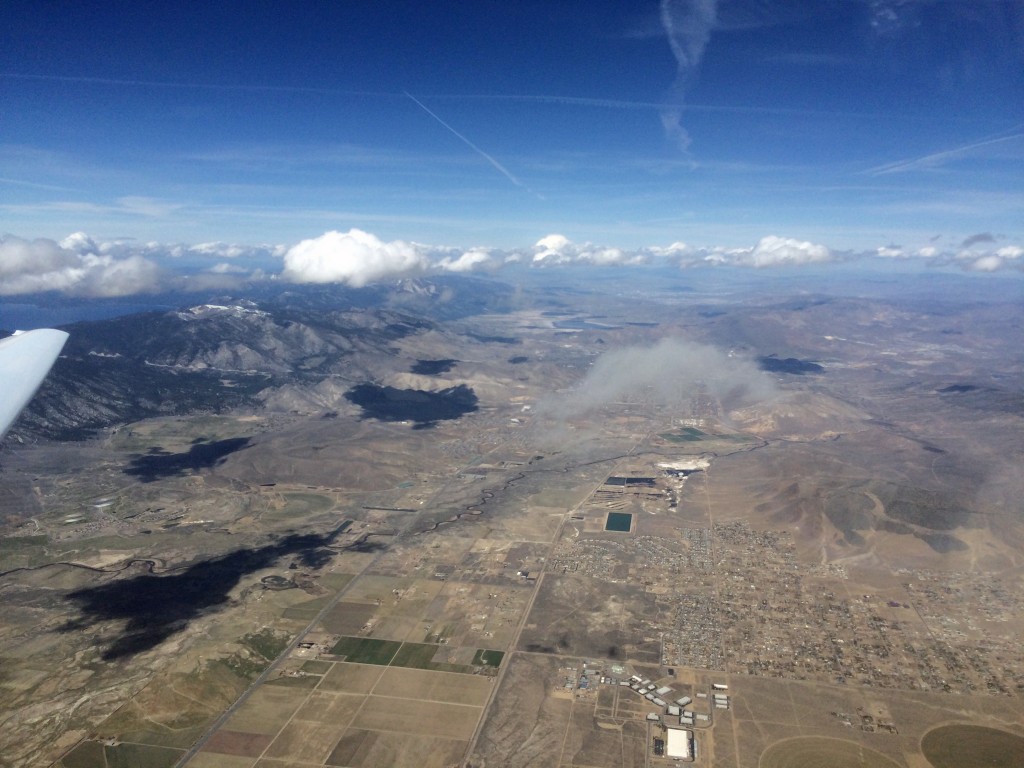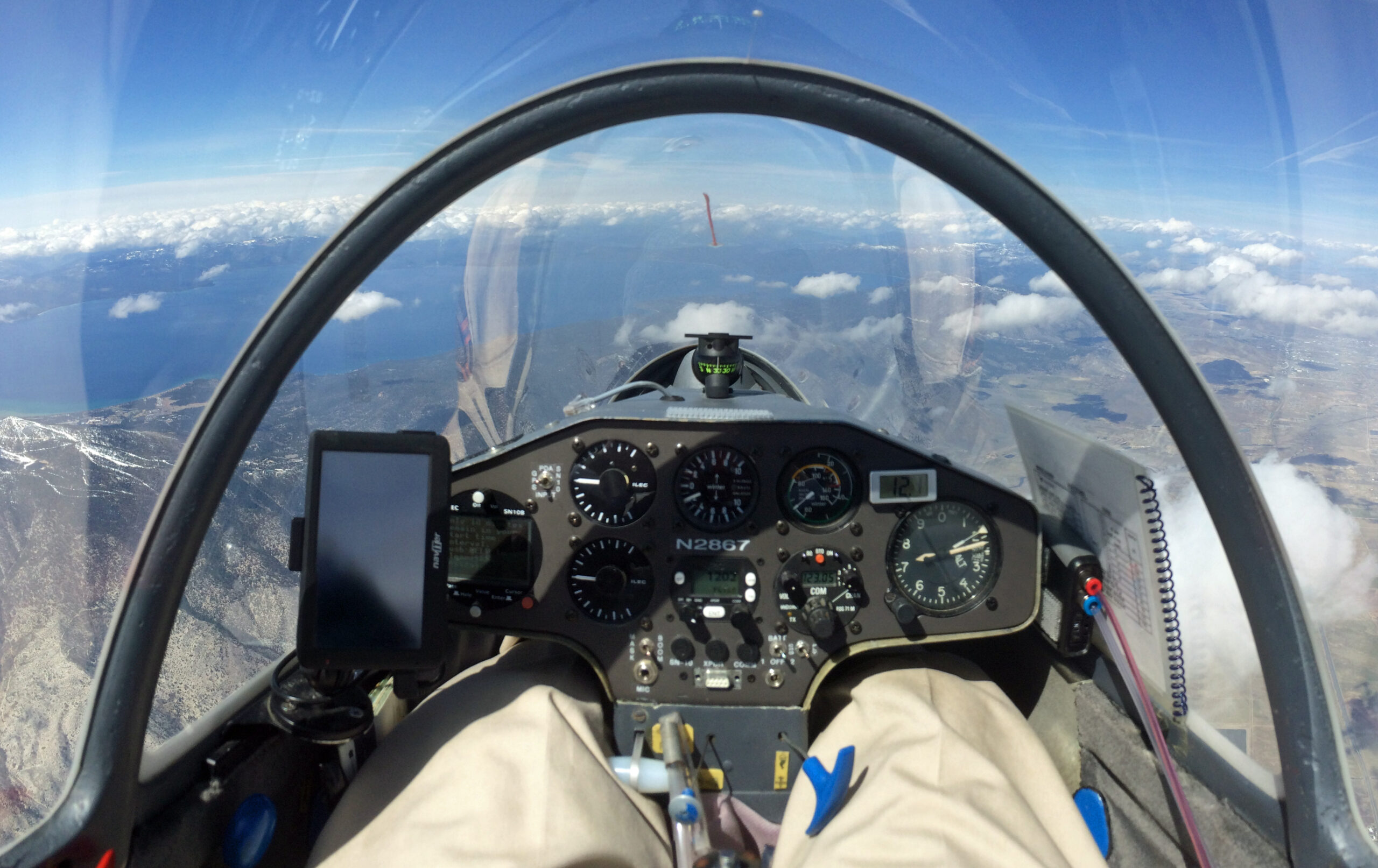The words “wave camp” fire up a strong feeling in most glider pilots. I took a week off from work to fly out to Minden, NV, for the 2015 Wave Camp. It was well worth it.
Besides the cool factor, the purpose of Wave Camp is to get badges. I was hoping to achieve Silver distance (50km) and Gold altitude (3,000m altitude gain). The altitude gain could take place anywhere in the wave, and I picked turnpoints 52km apart for the distance.
I ended up flying further than I had ever flown in a glider, higher than I’ve ever flown anything, in the air longer than any previous flight,
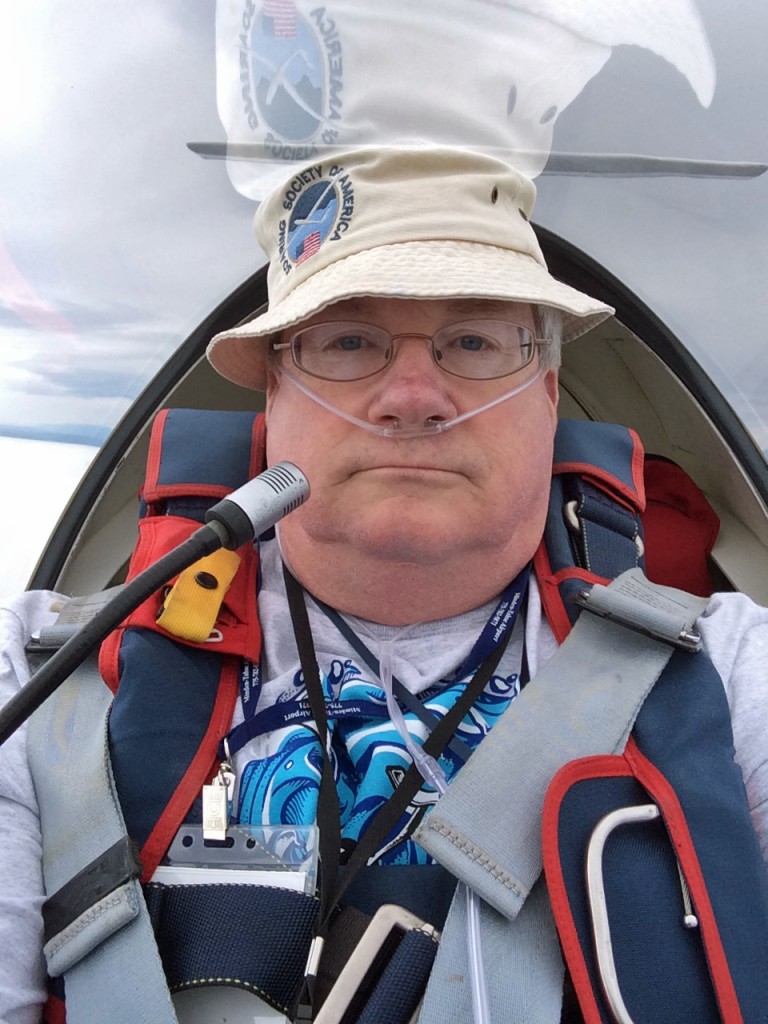
and at one point had the highest ground speed I’ve ever had. That flight broke all my personal flying records. But, no badges.*
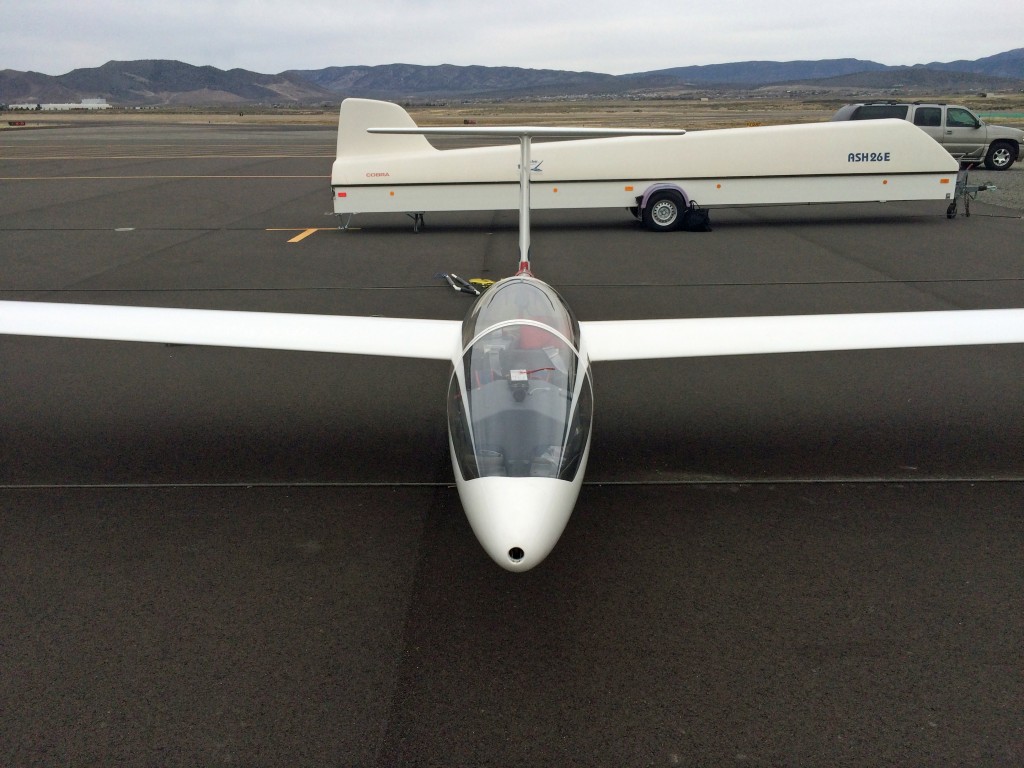
Through a series of emails with the Civil Air Patrol folks in Minden, fellow instructor Fred Lasor graciously offered the use of his 17m Kestrel. I made four flights in Fred’s Kestrel and would love to fly it again. However, since I remembered to put the gear down each time, no one will care about anything but the last flight.
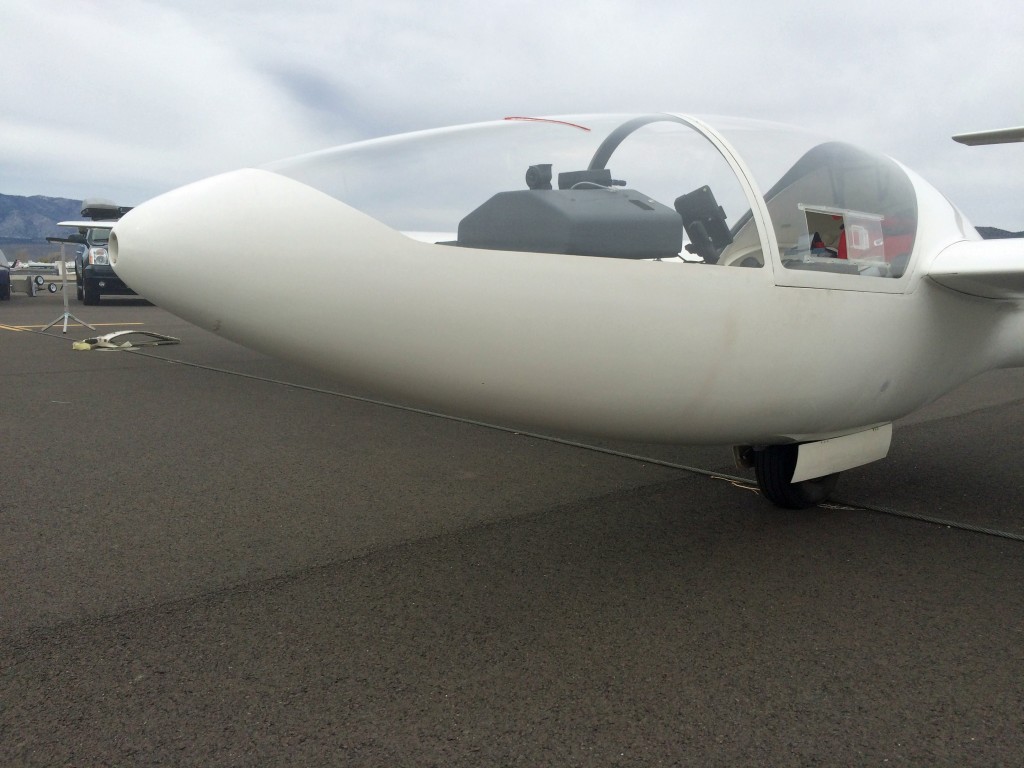
Takeoff was uneventful, as was most of the tow. There was none of the traditional rotor that had been discussed in class. I released in what I thought was good lift, but immediately began to sink. A quick turn back stopped the sink. A few minutes later I was slowly climbing. Very slowly.
Minden is famous for thousand-feet-per-minute wave. So why did I only have 50 feet per minute for the first hour? I don’t know either, but it took me an hour to gain the first 3,000 feet. I think I worked harder to stay up that hour than on any flight before. After surviving the first hour I was able to gain almost 200 feet per minute for a while.
Eventually I had gained a few thousand feet and was ready to push off on a big flight. Heading south I maneuvered to stay in the wave. There were only a few clouds, so it was not well marked – no lennies or clear line marking the wave. I pushed south, turned back, then back south again. I could see my southern target in the distance, but there was a clear gap in the mountains between where I was and where I needed to be. I chickened out.
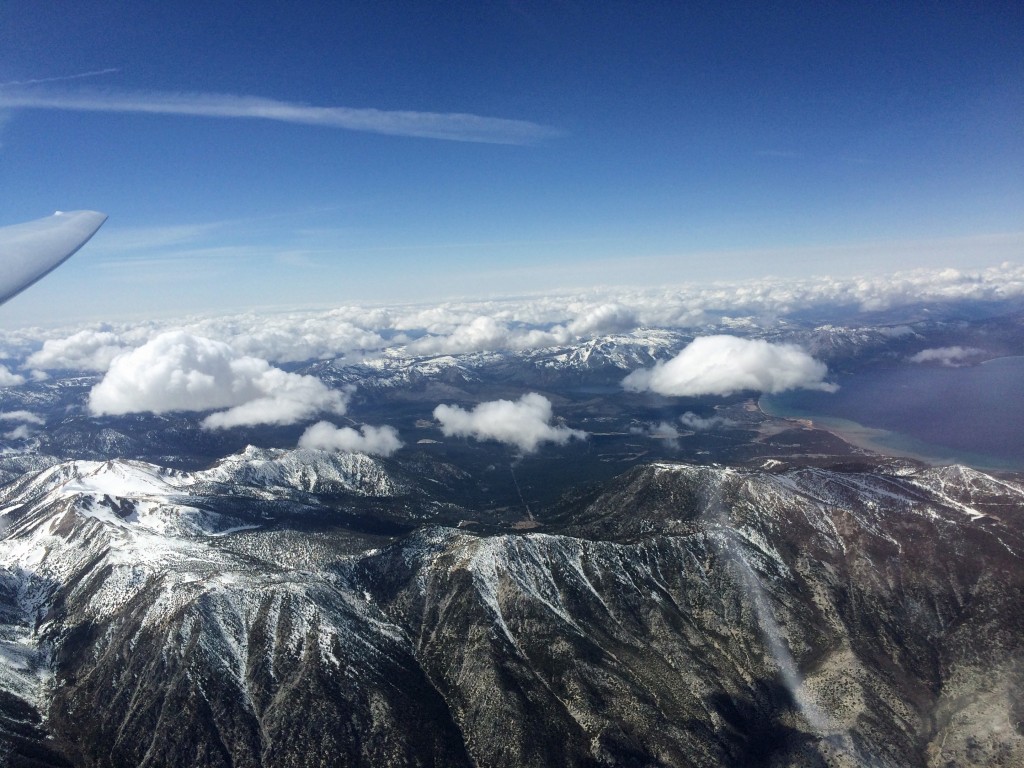
After bailing out at the southern end, I decided to try going north. There was a bigger gap to the north, but Fred had given me some tips on what to do. The wave was stronger, I was higher, and decided that the wave would really be where the terrain said it would be. I was high enough to cross, miss, come back and reconnect with the wave. The only reconnection was on the other side of the gap. I was across! I overflew the turn point and turned south. The view ahead of me was something I had never seen before. I was looking south along the back of the western Sierra Nevada mountains. I could see Lake Tahoe down to the right and ahead just left of my intended track a long line of clouds.
I thought, “This is it. This is going to be what wave flying is all about.” I pushed the Kestrel’s flap lever into the highest speed setting, pitched for 70 knots, corrected for the wave’s crosswind and FLEW! I was climbing at 200 feet per minute while flying at 70 knots. I’ve never seen that before!
I just kept going. And going. I flew south to where I had chickened out and just kept going. After making the northern jump in both directions I felt confident to try the southern one. I had reached 18,000 feet, so I had plenty of height to overfly my southern turnpoint even if I flew out of the wave. The wave was fading slowly the further south I flew, but it never went away. I was still in wave as I overflew my southern turnpoint – Alpine County Airport. (Or, so I thought.)
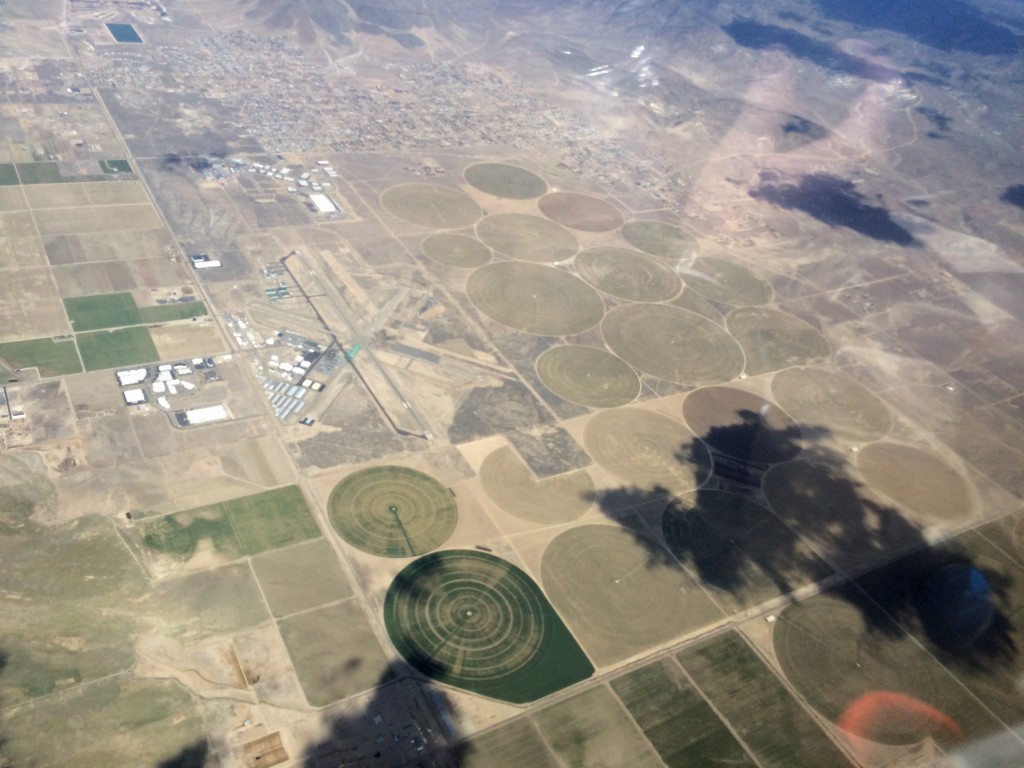
The flight north was uneventful. I played around with the wave for a while and decided to land. Little did I know what was coming.
The rotor going into the wave was minimal. The wave was generally so light that I didn’t expect anything bad. There’s a saying in flying that “take off is optional, landing is not.” The descent from 16,000’ over the valley to the 6,000-foot pattern altitude over KMEV was 45 minutes of the most violent, most brutal flying I have ever done. Bam, up, but I want to come down. Bam, down, but I sure don’t want to be coming down THAT fast. Oh, wait, up again. Tighten the seatbelt. Down, up, up some more, down. Belt tighter. DOWN! UP! Gear down and locked. Brakes out. Back in. Out. In. Then incredible quiet. So smooth. Time to land.
*It turns out that I missed the southern turnpoint by more than is allowed. I didn’t realize how much of the view the nose blocked from more than two miles above the ground. The wave experience was great, and I’m ready to go back and repeat the flight.
